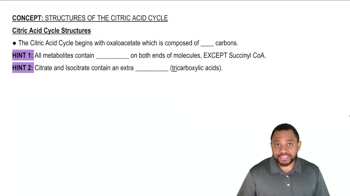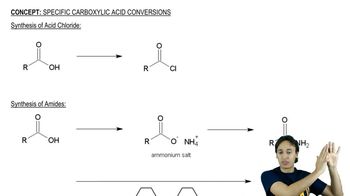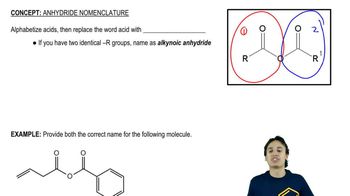Show how you would use an acid chloride as an intermediate to synthesize
(b) phenyl propionate (CH3CH2COOPh) from propionic acid and phenol.
 Verified step by step guidance
Verified step by step guidance Verified video answer for a similar problem:
Verified video answer for a similar problem:



 1:36m
1:36mMaster Synthesis of Acid Chlorides with a bite sized video explanation from Johnny
Start learning